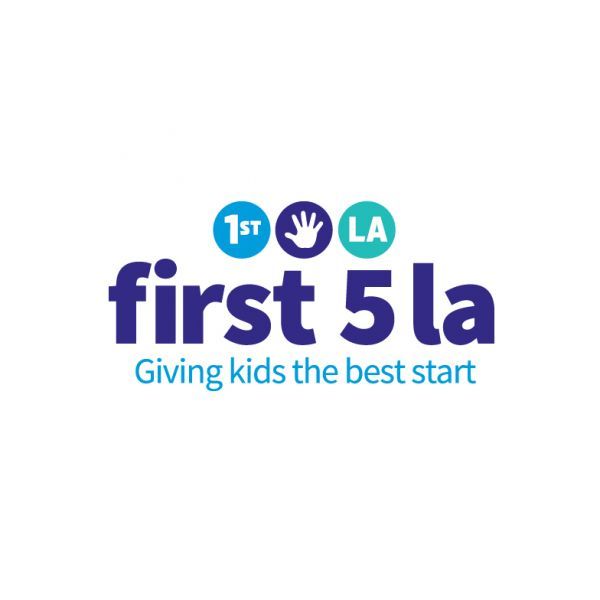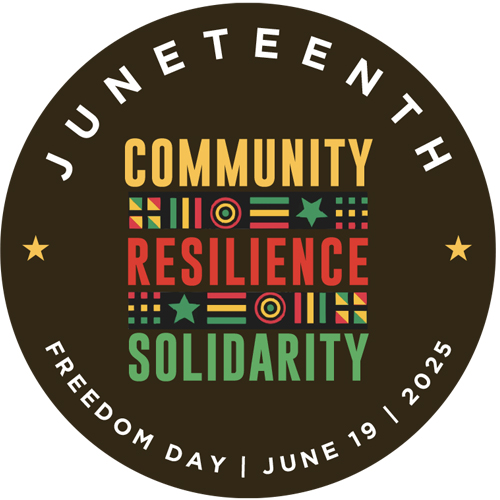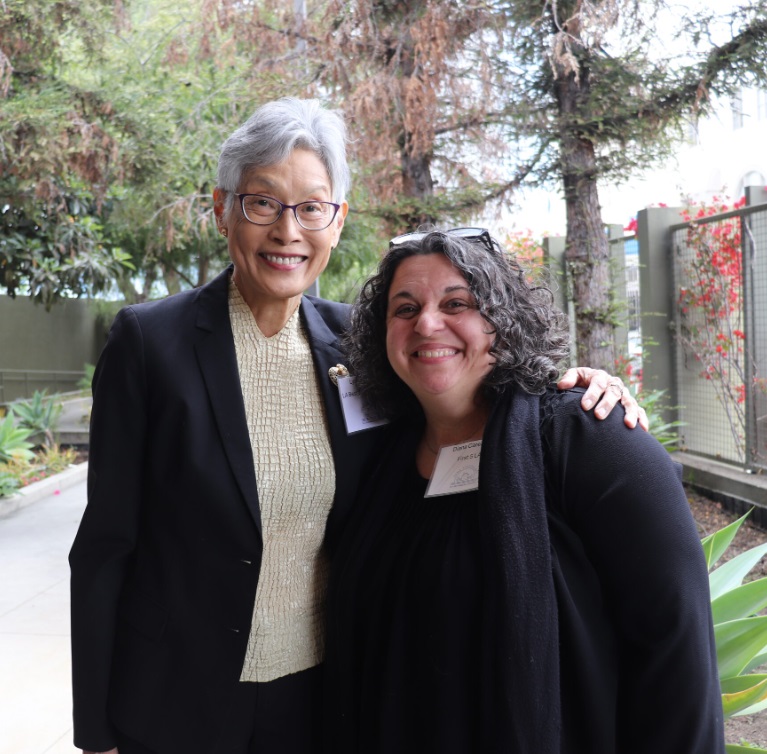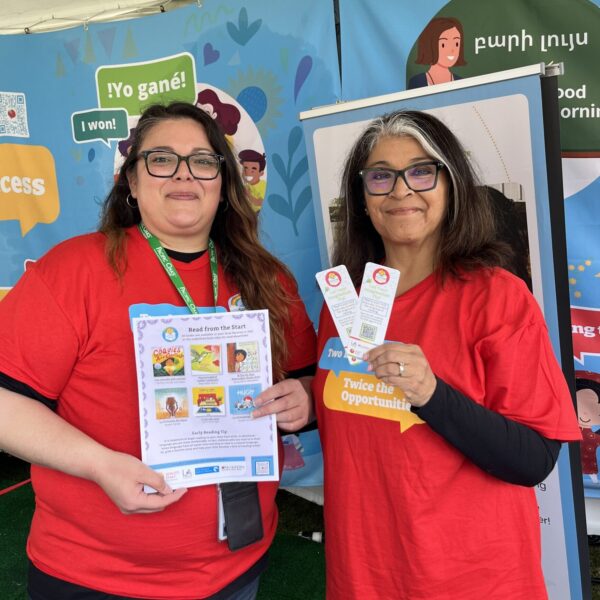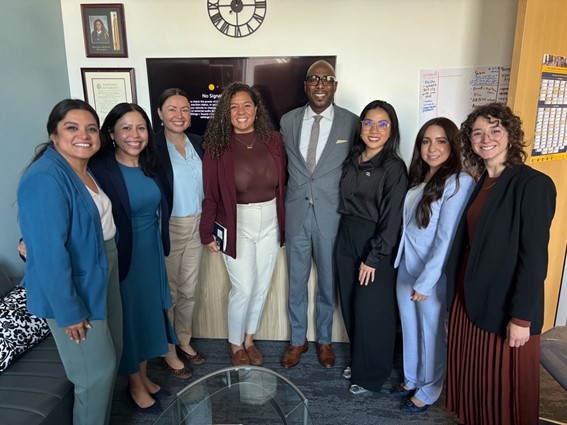February 25, 2021
At the beginning of the pandemic, TK-12 schools, alongside businesses, restaurants and many other sectors, were shut down across the country to prevent the transmission of the coronavirus. In many states, however, including California, child care centers remained open, albeit with precautionary measures and regulations on class size, to care for the children of employees considered “essential,” including grocery store workers and medical staff.
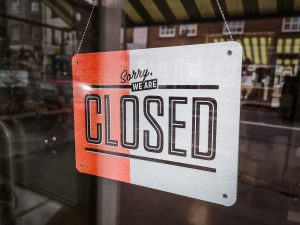 Nearly a year later, many schools’ doors are still shuttered and child care centers remain open (under great strain as they shoulder the burden of keeping up costly precautionary measures). But much has been learned about how the virus transmits in these settings and what role children play in passing it to each other, their teachers and their families.
Nearly a year later, many schools’ doors are still shuttered and child care centers remain open (under great strain as they shoulder the burden of keeping up costly precautionary measures). But much has been learned about how the virus transmits in these settings and what role children play in passing it to each other, their teachers and their families.
Although the data is not uniform or perfect, most studies suggest that transmission in school and child care settings is low if precautionary measures are taken. Just recently, the Centers for Disease Control and Prevention (CDC) released two papers confirming that infection rates among schools operating in-person are very low, according to data collected from two school districts. In December, the CDC published a report touting the practices of 55 Head Starts that have successfully kept transmission rates low.
So, if schools are relatively safe, why are so many still closed? And if at the beginning, we were unsure of how the virus spread among children, why were child care centers allowed to remain open? Many of these decisions have been driven by politicians weighing the costs and benefits to the public, as well as public opinion and the advice of public health experts. The decisions have been fluid, however, impacted by fear, changing leadership, teachers’ unions, evolving science and the arrival of a new vaccine.
While, in general, the science around transmission suggests school and child care settings are safe, there have been documented instances of transmission. For an unpredictable virus that can have deadly consequences, even a small percentage of cases can seem frightening. Southern California Early Childhood Reporter Mariana Dale followed the story of one South Los Angeles child care center that temporarily closed because its owner contracted the virus at work, despite the center following all of the guidelines.
However, it’s important to emphasize that the probability of transmission is low when guidelines are followed. A CDC study of child care centers and camps in Utah that did not follow precautionary measures showed that children could contract the virus and take it home to their families. In that study, 12 children, including a toddler, infected 46 family members, with three instances of asymptomatic children who spread it to their parents, one of whom ended up hospitalized.
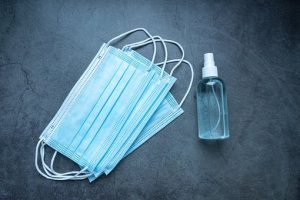 The cost of safety measures has also been key to the conversations around transmission. Schools must be able to afford the safety measures set forth by state and federal leaders, which in some districts, despite state and federal support, remains out of reach. In California, inequity among the schools that can afford to implement safety measures and those that can’t have become apparent — The San Francisco Chronicle recently published an analysis detailing which school districts have been able to open, finding it largely falls along wealth lines.
The cost of safety measures has also been key to the conversations around transmission. Schools must be able to afford the safety measures set forth by state and federal leaders, which in some districts, despite state and federal support, remains out of reach. In California, inequity among the schools that can afford to implement safety measures and those that can’t have become apparent — The San Francisco Chronicle recently published an analysis detailing which school districts have been able to open, finding it largely falls along wealth lines.
For the child care providers who have remained open throughout the pandemic, the costs of safety measures coupled with reduced class sizes have forced many to go into debt. According to a December report from the National Association for the Education of Young Children, more than half of all child care providers are losing money by staying open during the pandemic. The unsustainable business model has caused many thought leaders to predict a permanent collapse of the sector if more federal funding does not come through.
The story of transmission in school and child care settings is far from over, as communities continue to face difficult decisions about safety, balanced against a backdrop of economic challenges and ever-shifting messages on vaccination availability. To keep our readers informed about this developing story, we have compiled a library of article links, dating from September 2020, organized by the following topics: TK-12 School Transmission, Child Care Transmission, What the Doctors Say, Parent Concerns and COVID and Kids. We hope you find this compilation helpful.
TK – 12 Schools: Transmission
U.S. News & World Report: Coronavirus Infection Rate Among Children Surges as Schools Reopen
The sudden and dramatic increase coincides with schools reopening across the country. (Camera, 10/1/20)
NBC Bay Area: California Sees No Link From School Openings to Virus Spread
California has not seen a link between the reopening of K-12 schools for in-person learning and increased coronavirus transmission, the state’s top public health official said Tuesday. (Beam and Taxin, 10/6/20)
Also featured in KCRA (10/6/20), CBS SF Bay Area (10/6/20), Sacramento Bee (Sheeler, 10/6/20)
CALMatters: The key to students returning to school is not the science – it is the resources
Debates on when to reopen schools in California center on different assessments of COVID-19 risk, but there are other factors. (Riley, 10/13/20)
EdSource: Virus outbreaks unavoidable as school campuses reopen, experts warn
Safety measures can help lower, but not eliminate, the risk of virus transmission. (Jones, 10/23/20)
Slate Magazine: We’re Thinking About School Closings and Reopenings Wrong
Before we can decide whether schools can be open, we need to be clear about how we prioritize them. (Oster, 11/17/20)
WGBH: Emily Oster: ‘Schools Should Be Among First To Open And Last To Close’
In lieu of a national policy on schooling during the COVID-19 pandemic, states and individual districts have been left to decide for themselves how to balance competing concerns of child development, coronavirus spread and safety. (Mathews, 11/16/20)
KTLA: LAUSD: 1 in 10 asymptomatic children tested positive for the coronavirus
About 10% of asymptomatic children brought to L.A.-area campuses to get tested for the coronavirus over the past week were positive, the Los Angeles Unified School District announced Monday. (Bravo, 12/21/20)
KTLA: Children more at risk of contracting coronavirus at gatherings than in a classroom, study finds
Children are more at risk of contracting the coronavirus at a social gathering than in a classroom or childcare setting, according to a study released by the University of Mississippi Medical Center. (AP, 12/28/20)
KTLA: As reopening plans stall, 1 in 3 students are testing positive for COVID-19 at some L.A. schools
With 1 in 3 students testing positive for the coronavirus in some Los Angeles neighborhoods, Gov. Gavin Newsom’s push to reopen campuses is clashing with the reality of a raging pandemic as many school districts opt for January shutdowns and superintendents call for clearer guidance on when it will be safe to unlock their campus doors. (1/7/21)
CNBC: What we know about the spread of Covid among children — and whether shutting schools reduces the risk
The polarizing issue of whether schools should stay open is far from clear cut, with the World Health Organization urging policymakers to be guided by a risk-based approach to maximize the benefit for the population. (Meredith, 1/13/21)
WIRED: Everything We Know Now About Schools, Kids, and Covid-19
Researchers are finally getting good data on how severely SARS-CoV-2 affects children and how they transmit it. What does it mean for reopening classrooms? (Molteni, 1/15/21)
KHN: ‘We’re Not Controlling It in Our Schools’: Covid Safety Lapses Abound Across US
As President Biden calls for more support to help schools hold in-person classes, public health experts say schools can be relatively safe if they take well-known steps to prevent covid. But a KHN investigation shows many districts and states have ignored health advice or written their own questionable safety rules for schools. (Ungar, 1/26/21)
U.S. News & World Report: Measuring the Impact of the Coronavirus on Teachers, Students and Schools
Education officials are assessing and untangling all the ways schools have been reporting data and making decisions and filtering them into common metrics and a usable format. (Camera, 1/25/21)
The New York Times: Covid-19: C.D.C. Says Its Safe to Reopen Schools, With Precautions
The Biden administration is nearing a deal with Pfizer and Moderna for 200 million more doses, but the pace of vaccinations may not escalate for months. Global coronavirus cases have topped 100 million. (1/27/21)
The Washington Post: The Health 202: CDC-backed research finds schools aren’t big coronavirus spreaders
Two new papers by researchers for the Centers for Disease Control and Prevention found scant coronavirus transmission in schools operating in person. Compared with workplaces and nursing homes, schools haven’t seen much spread of the virus. (Cunningham, 1/27/21)
The Atlantic: The Truth About Kids, School, and COVID-19
We’ve known for months that young children are less susceptible to serious infection and less likely to transmit the coronavirus. Let’s act like it. (Thompson, 1/28/21)
The Atlantic: Just Open the Schools Already
We’ve known for months that young children are less susceptible to serious infection and less likely to transmit COVID-19. Let’s act like it. (Thompson, 1/28/21)
KHN: Schools Walk The Tightrope Between Ideal Safety And The Reality Of Covid
California mom Megan Bacigalupi has had enough. She wants her kindergartner and second grader back in their Oakland classrooms. But the coronavirus is spreading too quickly to open schools in Alameda County, based on the current state standards. (Ungar and Young, 2/8/21)
AP: CDC Study: Teachers Key To COVID-19 Infections In 1 District
A new study finds that teachers may be more important drivers of COVID-19 transmission in schools than students. (Amy, 2/23/21)
Child Care and Head Start: Transmission
Newsweek: 8-Month-Old Among Kids Who Caught COVID-19 at Childcare Facilities And Spread It to Relatives, Study Shows
Children who contracted coronavirus at day care facilities and day camps spread it to their relatives, according to a new report from the U.S. Centers for Disease Control and Prevention (CDC). (Rahman, 9/12/20)
Also featured The Washington Post (9/12/20), CNBC (9/11/20), Forbes (Walsh, 9/11/20), CBS Sacramento (9/12/20)
KTLA: 62 coronavirus cases traced to outbreaks at Sonoma County preschools, child care centers
Sonoma County health officials this week reported 62 coronavirus cases traced to outbreaks in at least a dozen preschools and child care centers. (Estacio, 9/20/20)
Center for the Study of Child Care Employment: Is child care safe when school isn’t? Ask an early educator
As the coronavirus pandemic rages on, hopes of safely returning to in-person learning this fall have evaporated for millions of K-12 students, leaving families scrambling to find care and confronting the nation with a long-standing fact: our schools also provide child care, not only education. (Whitebook & Austin & Williams, 9/22/20)
LAist: A Child Care Center Followed The COVID Safety Guidelines. It Still Had An Outbreak
The coronavirus pandemic caused more than half of Los Angeles day care centers to close by April. Among those that stayed open was Centro Alegria, a child care facility in Boyle Heights run by the nonprofit group Proyecto Pastoral. (Dale, 8/7/20)
The Los Angeles Times: Child care centers don’t drive coronavirus infections, national study shows
A large national study published by the American Academy of Pediatrics on Wednesday provides some of the clearest evidence yet that child care centers don’t hasten the spread of the novel coronavirus, even in communities where overall infections are high. (Sharp, 10/14/20)
Also featured In CNBC (Leonhardt, 10/14/20), Insider (Michelson, 10/14/20), Today (Breen, 10/14/20)
Forbes: New Study Looks At Covid-19 Risk In Child Care Workers
When the pandemic was in its infancy, real infants were sent home. Day care facilities, child care centers and preschools across the country closed precipitously, leaving millions of families scrambling to figure out what that Zoom app was, all while trying to keep toddlers away from webcams and dongles. (Shapiro, 10/20/20)
The Washington Post: Covid-19 and child care: What the latest research says
Although sending their offspring back to day care would provide a welcome respite to parents who are both working and caring for young children, many have been hesitant — fearful of exposing their children and themselves to the novel coronavirus. (Chiu, 10/22/20)
LAist: A Child Care Center Followed The COVID Safety Guidelines. It Still Had An Outbreak
The coronavirus pandemic caused more than half of Los Angeles day care centers to close by April. Among those that stayed open was Centro Alegria, a child care facility in Boyle Heights run by the nonprofit group Proyecto Pastoral. (Dale, 8/7/20)
The Mercury News: Cases of coronavirus in children spiked to over 61,000 last week
Soaring case counts around the country are impacting children at “unprecedented levels,” according to new numbers released Monday by the American Academy of Pediatrics and the Children’s Hospital Association, which are tracking data reported by state health departments. (LaMotte, 11/3/20)
EdNC: In-person child care did not increase COVID-19 risk for teachers, study says. What can we learn from that?
As K-12 school leaders across North Carolina consider when and how to serve students in-person safely, many child care directors have kept their doors open for the entire year. (Bell, 11/3/20)
WBUR: Child Care Providers Find Ways To Get More Coronavirus Testing On Their Own
As more people get COVID-19 across the state, it’s inevitable that cases will pop up in preschools and child care, despite health precautions such as wearing masks and rigorous cleaning. (McNerney, 11/30/20)
Axios: How Head Start child care programs handled COVID-19 safety
Head Start programs may provide a model for how to implement coronavirus protections in child-care facilities, according to an analysis from the Centers for Disease Control and Prevention. (Fernandez, 12/7/20)
AAP Journals: Are Child Care Settings COVID-19 Petri Dishes for Child Care Providers?
Are child care providers at high risk for contracting COVID-19 from their young charges? (Moon, 12/8/20)
Business Insider: 3 ways Head Start childcare programs have prevented COVID-19 outbreaks while serving thousands of kids
The report surveyed programs in eight states and found mask-wearing and social distancing by kids and staff helped them avoid outbreaks. (Michelson, 12/16/20)
The Hill: CDC report reveals ways Head Start child care programs have prevented COVID-19 outbreaks
Meanwhile, a third wave of the pandemic is surging. (Srikanth, 12/18/20)
LAist: Child Care Providers And Parent Anxiety Rises With Coronavirus Case Count
More than half of all coronavirus outbreaks reported at child care and early education programs in Los Angeles County since the pandemic began have stemmed from the recent record surge in COVID-19 cases. (Dale, 12/21/20)
The First Five Years Fund: New CDC Study Examines How Head Start Programs Successfully Mitigate Spread of COVID-19
The CDC recently released a new report outlining how Head Start providers have successfully implemented CDC guidance and other safety measures, allowing them to continue offering in-person learning. (Danley, 1/11/21)
What the Doctors Say
American Academy of Pediatrics: Under the Right Conditions, Center-Based Child Care is an Unlikely COVID-19 Threat to Staff
Research on coronavirus transmission from young children to adults in child care settings is largely based on case reports with limited generalizability,1,2 impeding evidence-based assessment of infection risk to child care providers. (Friedman, 1/1/21)
Medical Xpress: Pediatricians’ group says school is priority, with proper safety measures
A prominent U.S. doctors’ group reaffirmed its recommendation this week that having kids physically in school should be the goal, while also outlining safety protocols needed to allow schools to be open. (1/6/21)
Newsweek: Los Angeles Area Pediatricians Call For Schools to ‘Immediately Reopen,’ Despite State COVID Guidelines
group of pediatricians in Southern California have called for the immediate reopening of Los Angeles County schools, in a move that goes at odds with current coronavirus state guidelines. (Colarossi, 2/3/21)
Also featured in KTLA (2/3/21)
Parent Concerns
KCRW: Is it safe for a baby or toddler to stay at day care centers during the COVID-19 pandemic?
Is it safe for a baby or toddler to go to day care during the pandemic? Pasadena mom Katrina Frye has been asking this question since the summer, as her bubbly baby grew into an extroverted toddler. (Fernandes, 10/6/20)
The New York Times: For Parents, Sending Children Back to School Seemed Too Risky
For many New York City parents, the choice between in-person classes or remote learning wasn’t just about their child’s education. (Rosa, 10/14/20)
The New York Times: Can I Safely Send My Kid to Day Care? We Asked the Experts
As states struggle with reopening, parents are scrambling to figure out child care amid a fall surge of coronavirus. (Sohn, 10/22/20)
Medical Xpress: Is daycare a safe option during the pandemic?
It depends on where you live, the health of your child and other family members, and the steps your child care facility or provider takes to help prevent the spread of COVID-19. (Munshi, 12/14/20)
Salon: Is it safe to send your kids to school?
Health experts worry the issue has become politicized, and argue it’s safer than one might think — with a catch. (Karlis, 1/12/21)
COVID and Kids
Axios: Over 513,000 U.S. teens, children have been diagnosed with COVID-19
513,415 children and teens in the U.S. have tested positive for the coronavirus from the time the pandemic arrived in the country through Sept. 3, according to a report from the American Academy of Pediatrics and Children’s Hospital Association. (Knutson, 9/9/20)
The Washington Post: Does the coronavirus spread easily among children?
It appears the virus can spread among children and teens, but how easily may vary by age. Research is still underway, but children under age 10 seem to be less likely than older kids to transmit the virus to other children and adults. (AP, 9/22/20)
The Washington Post: COVID-19 cases rising among US children as schools reopen
After preying heavily on the elderly in the spring, the coronavirus is increasingly infecting American children and teens in a trend authorities say appears fueled by school reopenings and the resumption of sports, playdates and other activities. (Tanner, 9/30/20)
Axios: COVID-19 cases on the rise among U.S. children
An increasing number of COVID-19 cases among school-aged children across the U.S. throughout September may be linked to school reopenings and other community activities resuming. (Arias, 9/30/20)
NBC: More than 61,000 children got Covid-19 last week, a record
Pediatric cases now account for 11 percent of all cases in the U.S., up from 2 percent in April. (Edwards, 11/2/20)
CNBC: There’s no extra Covid risk from living with kids, study finds
Living with children does not carry with it a greater risk of contracting Covid-19, according to a study in the U.K. (Ellyatt, 11/4/20)
NPR: Over 1 Million Children Tested Positive For Coronavirus In The United States
That’s according to data from the American Academy of Pediatrics and the Children’s Hospital Association. On Monday, the AAP said more than 1 million children have tested positive for the coronavirus in the United States. (Oxner, 11/16/20)
Also featured in NBC News (Edwards, 11/16/20)
WebMD: Kids Highly Likely to Transmit COVID to Others
While children are less susceptible to illness with the new coronavirus, they are nearly 60% more likely than adults over 60 to infect other family members when they are sick, a new study shows. (Preidt, 1/21/21)
KHN’s ‘What the Health?’: Covid and Kids
Can schools safely reopen before all teachers and staffers are vaccinated against covid? And what’s the best way to communicate that science — and scientific recommendations — change and evolve? Also, get ready for a redo of open enrollment for Affordable Care Act coverage, this time with help and outreach to find those eligible. Margot Sanger-Katz of The New York Times, Alice Miranda Ollstein of Politico and Anna Edney of Bloomberg News join KHN’s Julie Rovner to discuss these issues and more. (2/4/21)


